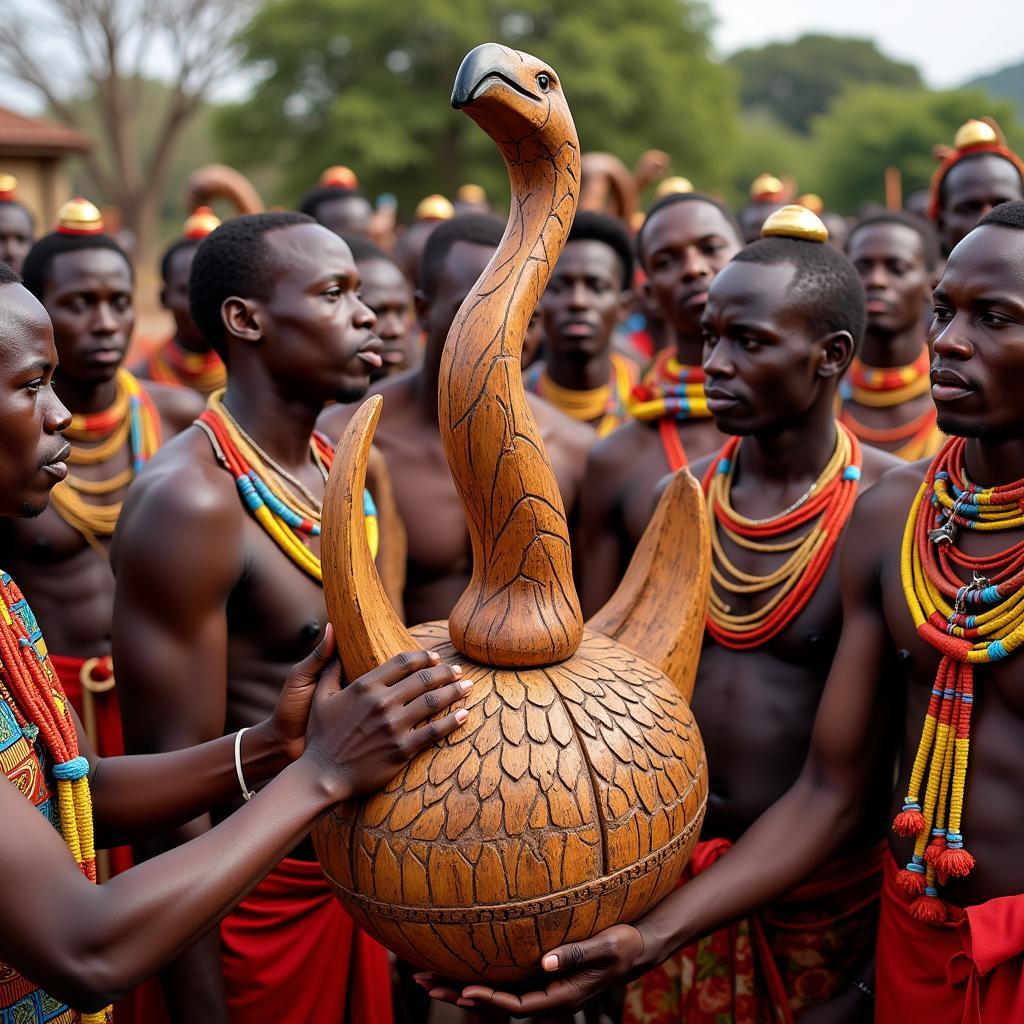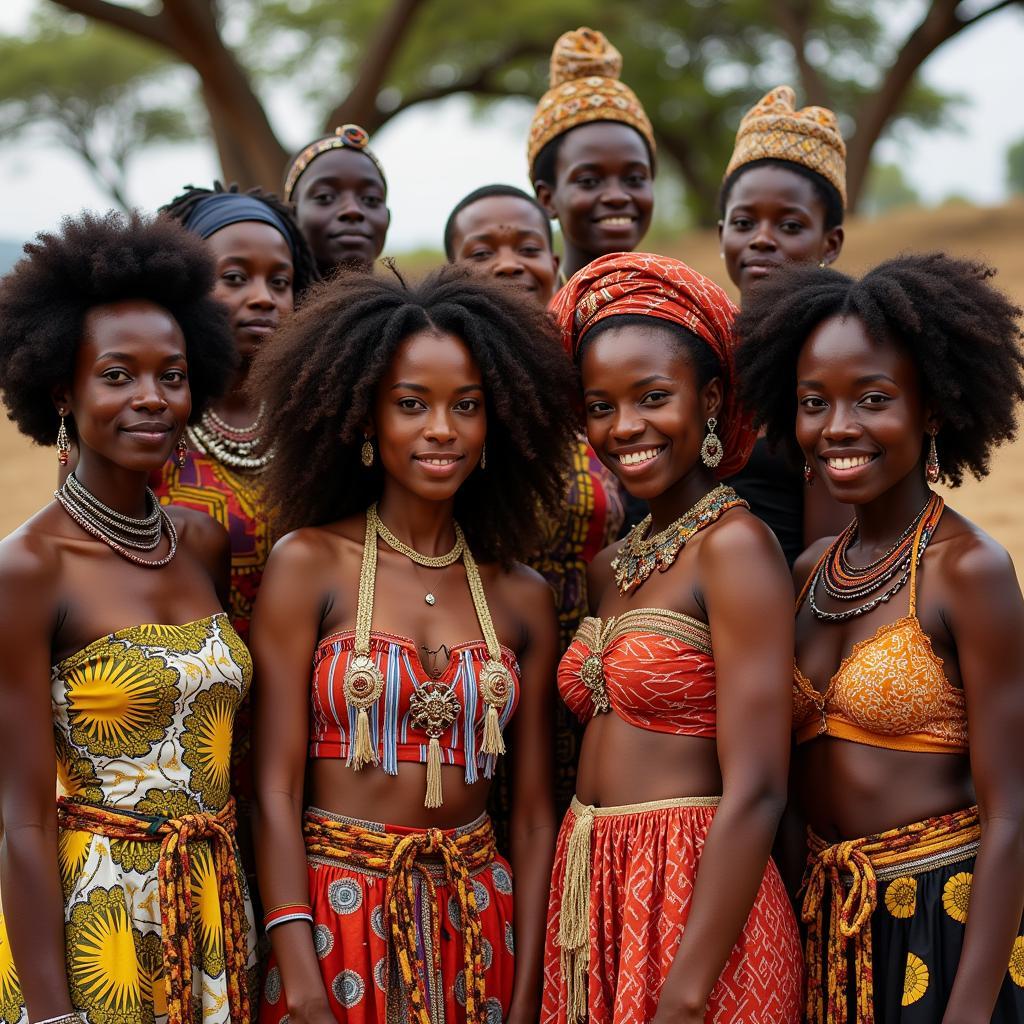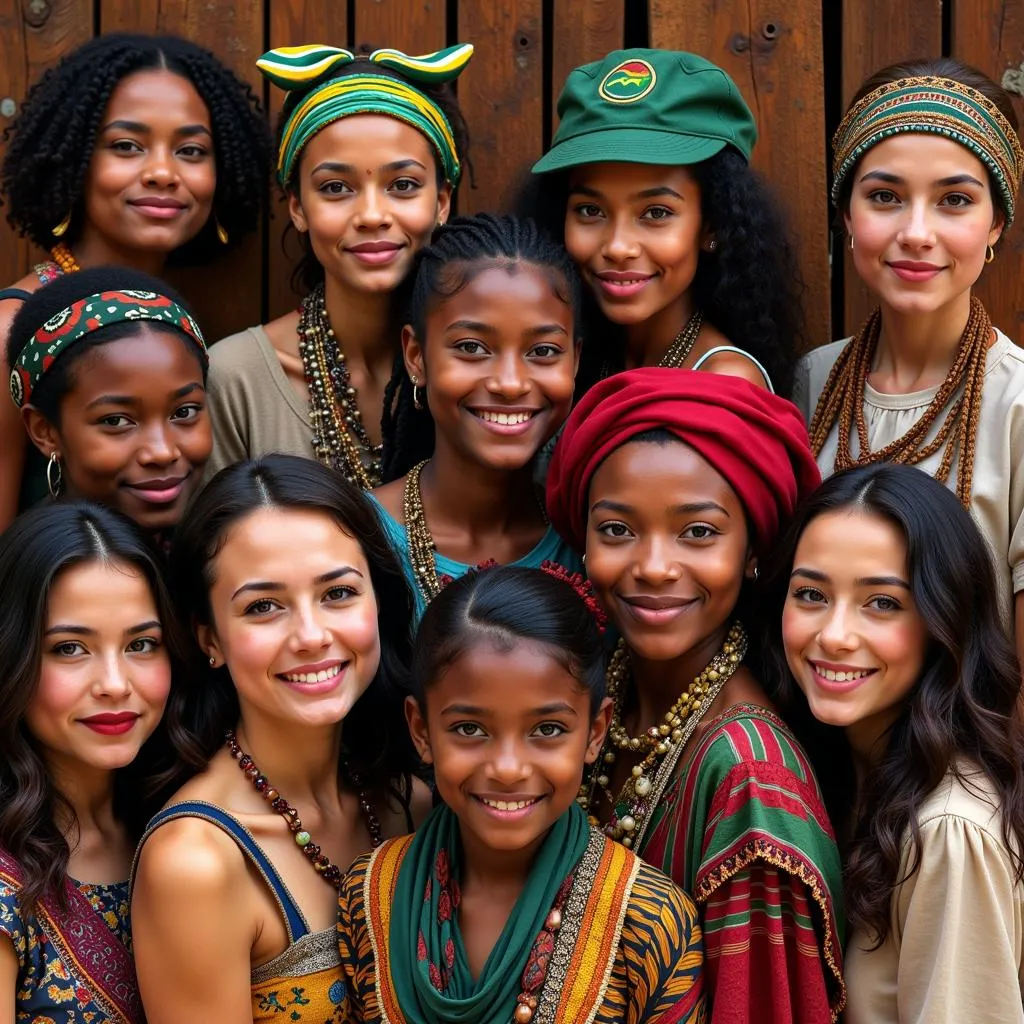African Hand Fans for Sale: A Guide to Finding Authentic and Beautiful Pieces
African hand fans are more than just tools to cool down; they are intricate works of art, steeped in cultural significance and history. These stunning pieces showcase the diverse craftsmanship found across the African continent, with each region boasting unique styles, materials, and symbolism. If you’re looking to purchase authentic African Hand Fans For Sale, this guide will provide you with valuable information to make an informed and meaningful purchase.
The Cultural Significance of African Hand Fans
In many African cultures, hand fans hold profound meaning and are used for various ceremonial and social purposes. They can symbolize power, royalty, spirituality, and are often incorporated into traditional dances, weddings, and other important events.
For example, in some cultures, large, elaborately decorated fans are used by rulers as symbols of authority, while smaller, more delicate fans might be given as gifts to signify friendship or respect. Understanding the cultural context behind these fans adds another layer of appreciation for their artistry and craftsmanship.
Exploring Different Types of African Hand Fans
African hand fans are created using an impressive range of materials and techniques. Each region has developed its own distinctive style, often incorporating locally sourced materials and reflecting the cultural aesthetic of the area. Here are some popular types of African hand fans:
- Woven Fans: These fans are crafted from natural fibers like raffia, palm leaves, or grasses. They are often adorned with intricate weaving patterns, beads, or shells.
- Wooden Fans: Carved from various wood types, these fans can be simple and elegant or intricately designed with detailed carvings of animals, people, or geometric motifs.
- Textile Fans: Using colorful and patterned fabrics like Ankara or Kente cloth, textile fans often feature elaborate embroidery, applique work, or beading.
- Feather Fans: These striking fans are made with feathers from various birds, chosen for their color, size, and symbolic meaning. They can be simple and elegant or incredibly ornate.
Tips for Buying African Hand Fans for Sale
When searching for authentic African hand fans for sale, it’s essential to be a mindful consumer. Here are some tips to ensure you are purchasing ethically sourced and genuinely crafted pieces:
- Research the Seller: Buy from reputable dealers who specialize in African art and crafts. Look for sellers who provide information about the origin and craftsmanship of their fans.
- Look for Authenticity: Pay attention to the materials, craftsmanship, and details. Authentic hand fans are often handmade and unique, with slight imperfections that add to their charm.
- Ask Questions: Don’t hesitate to ask the seller about the fan’s origin, materials used, and the artisan who created it. A genuine seller will be knowledgeable and happy to answer your questions.
- Consider the Purpose: Are you buying a fan for decorative purposes, as a gift, or to use? Your intended use will influence the size, style, and material you might prefer.
- Set a Budget: African hand fans can range in price depending on the materials, craftsmanship, and age. Determine your budget beforehand to narrow down your options.
Caring for Your African Hand Fan
Once you’ve found the perfect African hand fan, you’ll want to ensure its longevity and beauty. Here are a few care tips:
- Handle with Care: Always handle your fan with clean hands and avoid touching the delicate parts, such as feathers or beads.
- Dust Regularly: Use a soft feather duster or a microfiber cloth to gently remove dust and debris from the fan’s surface.
- Store Properly: When not in use, store your fan in a cool, dry place, away from direct sunlight or humidity. Avoid hanging it by the handle, as this can cause stress on the materials.
Conclusion
African hand fans are not just beautiful objects; they are tangible connections to the continent’s rich cultural heritage and artistic traditions. By purchasing these handcrafted pieces, you support skilled artisans and help preserve these unique art forms for generations to come. Whether you choose a vibrantly woven fan or an intricately carved wooden piece, an authentic African hand fan is sure to become a cherished possession and a conversation starter in your home.
FAQs about African Hand Fans:
-
What is the average price range for African hand fans?
The price can range significantly depending on the materials, size, and craftsmanship. Simple woven fans may start around $20, while elaborately carved wooden or feather fans can cost hundreds of dollars. -
Are African hand fans only used by women?
No, while often associated with women, hand fans are used by both men and women in many African cultures. The size, design, and materials can signify different roles and social statuses. -
Where can I buy authentic African hand fans online?
Several reputable online retailers specialize in African art and crafts. It’s crucial to research the seller, read reviews, and ensure they provide information about the origin and authenticity of their products. -
Can I use my African hand fan as a decorative piece?
Absolutely! African hand fans make stunning decorative accents for homes and offices. Their vibrant colors, unique designs, and cultural significance add a touch of global style to any space. -
What is the best way to clean a feather hand fan?
Use a soft, dry feather duster to gently remove dust from the feathers. Avoid using water or cleaning solutions, as they can damage the delicate feathers.
For more information on African art and culture, explore our other articles on African fan hot.
Need assistance? Feel free to contact us:
- Phone: +255768904061
- Email: kaka.mag@gmail.com
- Address: Mbarali DC Mawindi, Kangaga, Tanzania
Our customer service team is available 24/7 to answer your questions and provide support.



